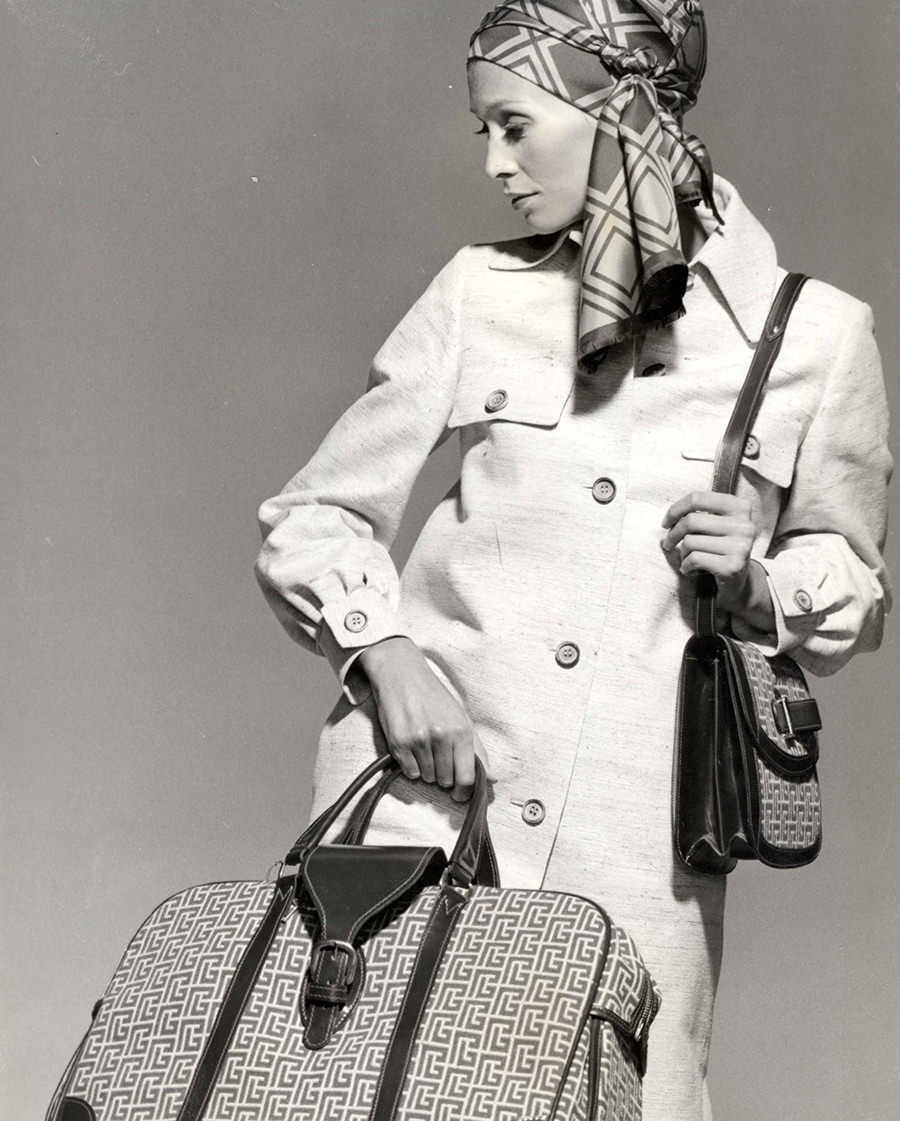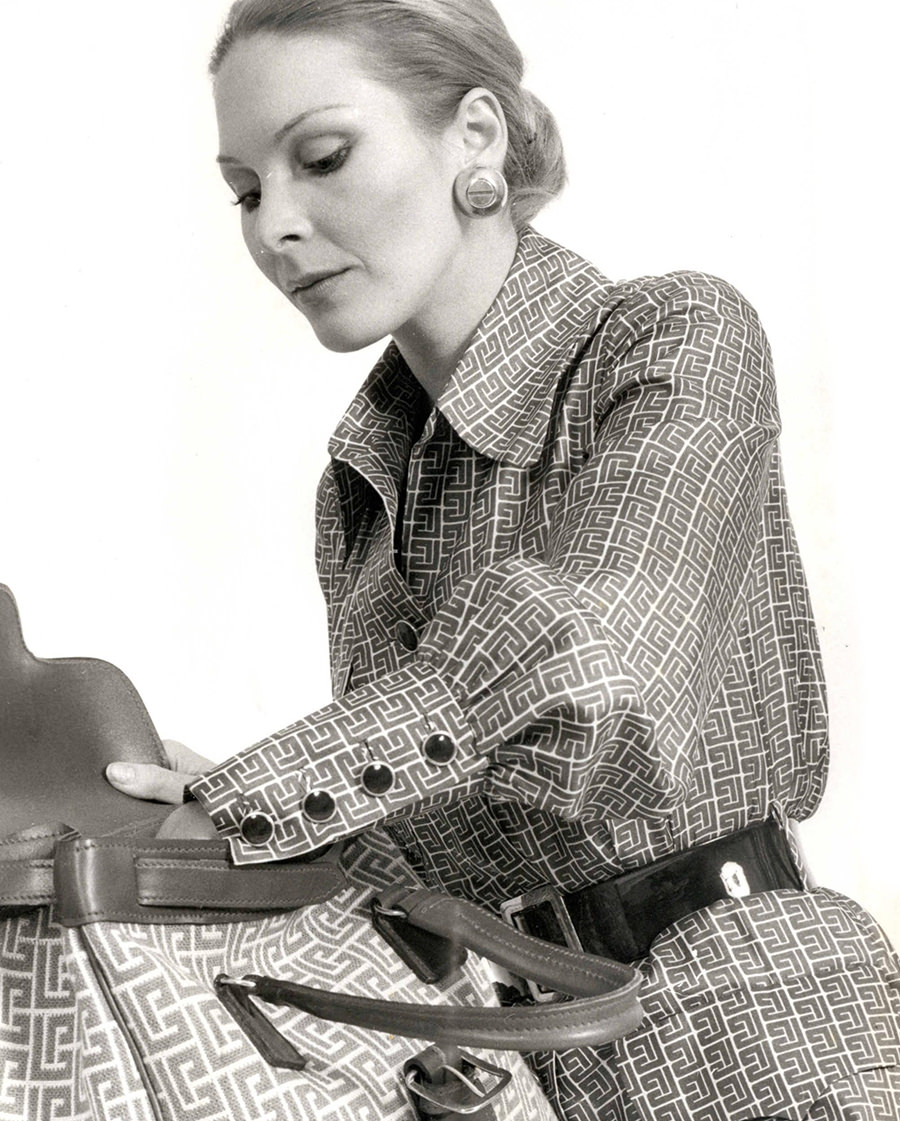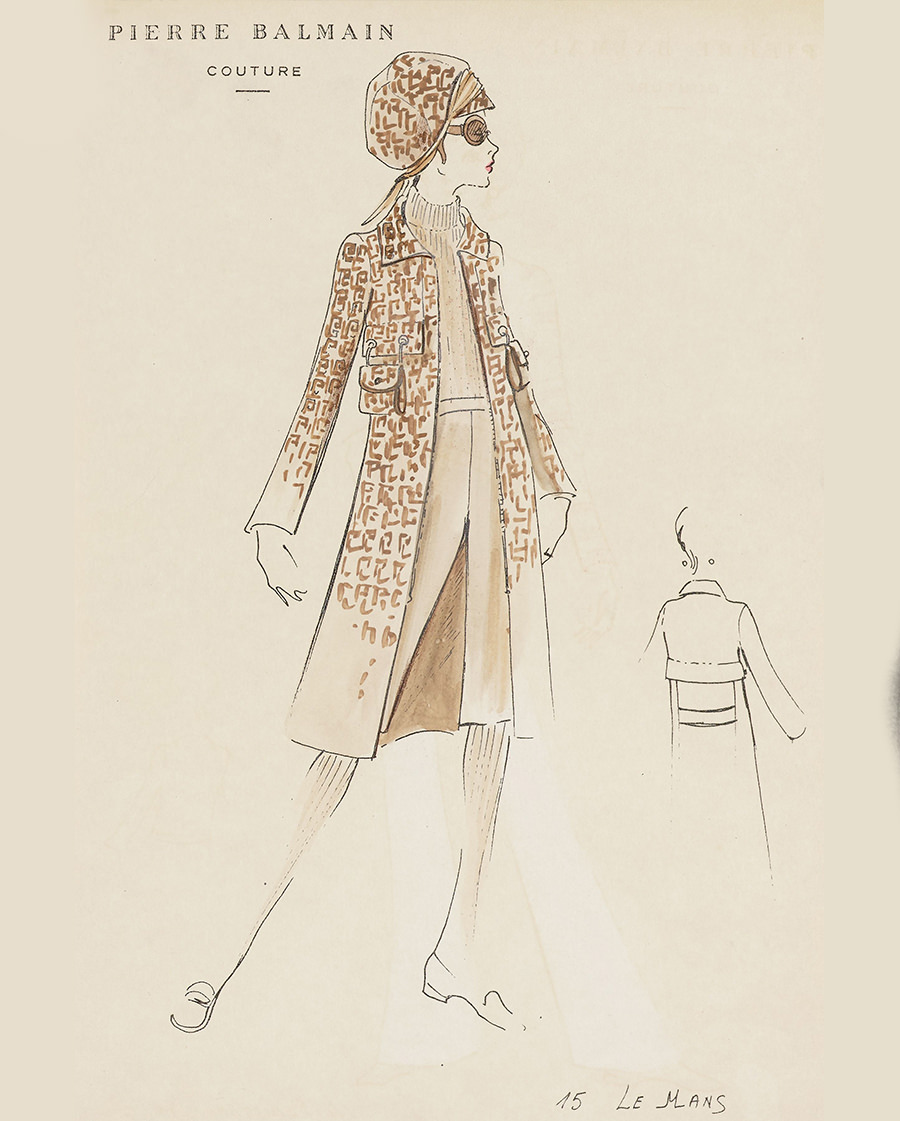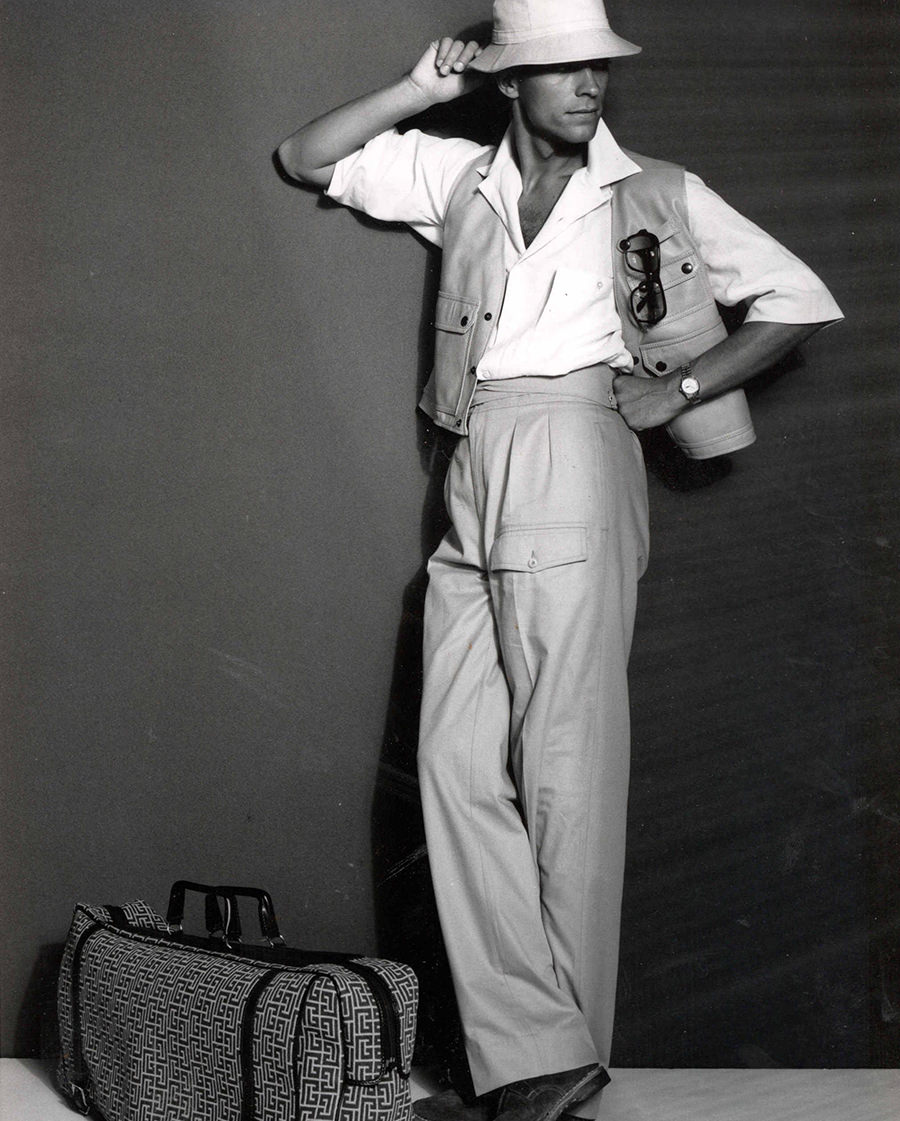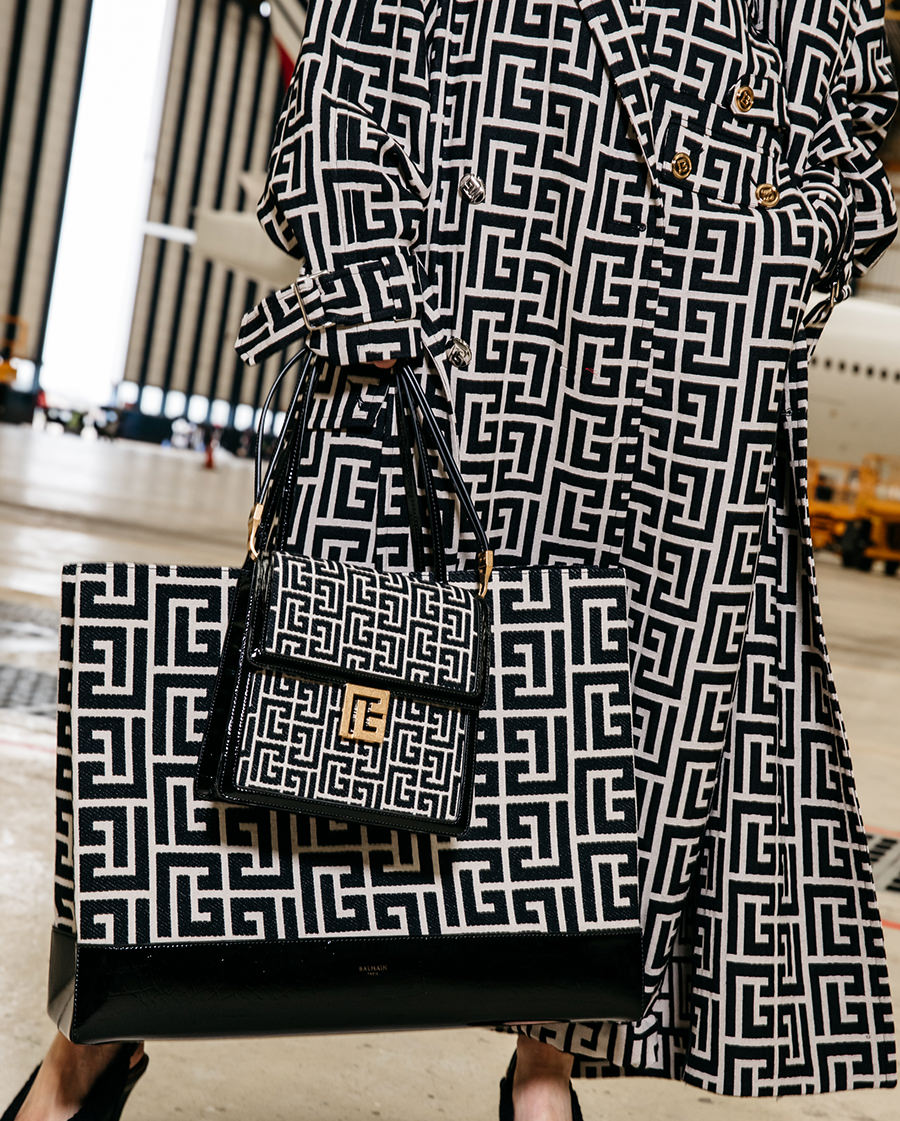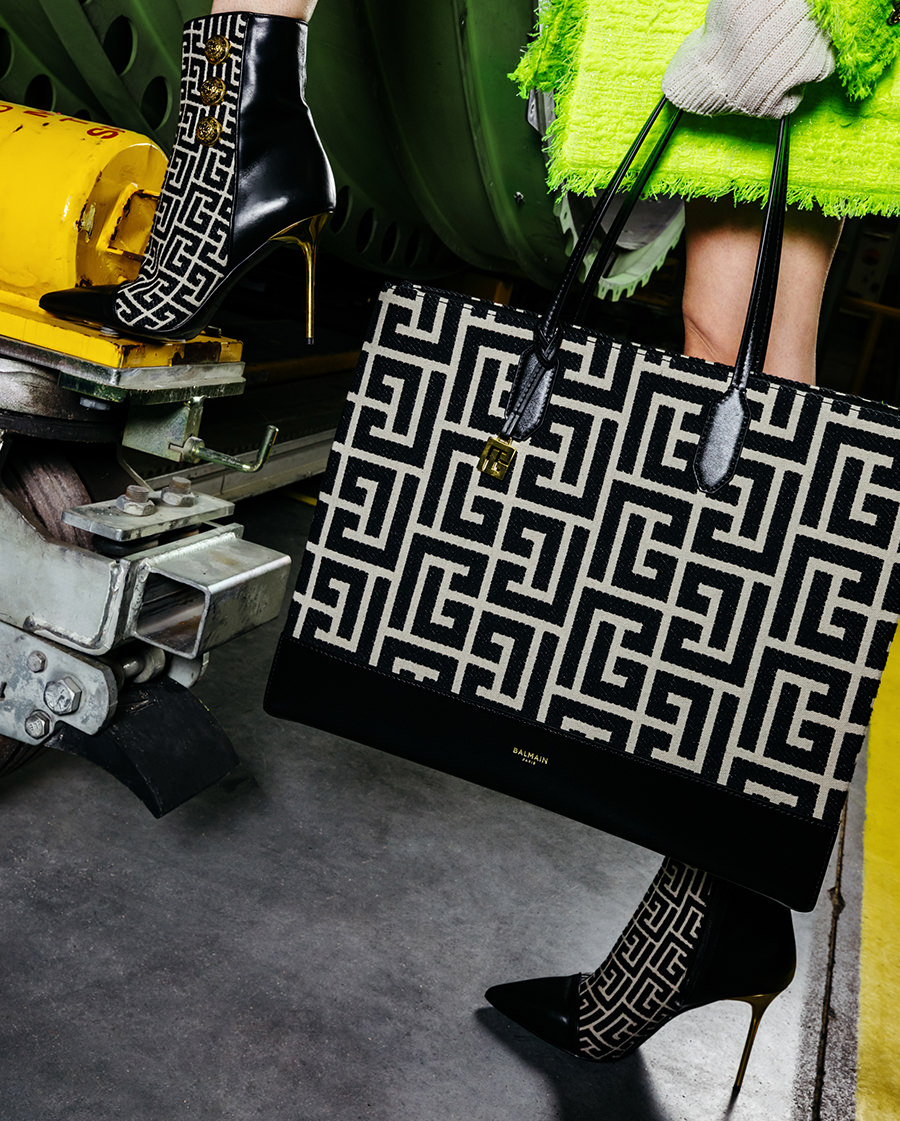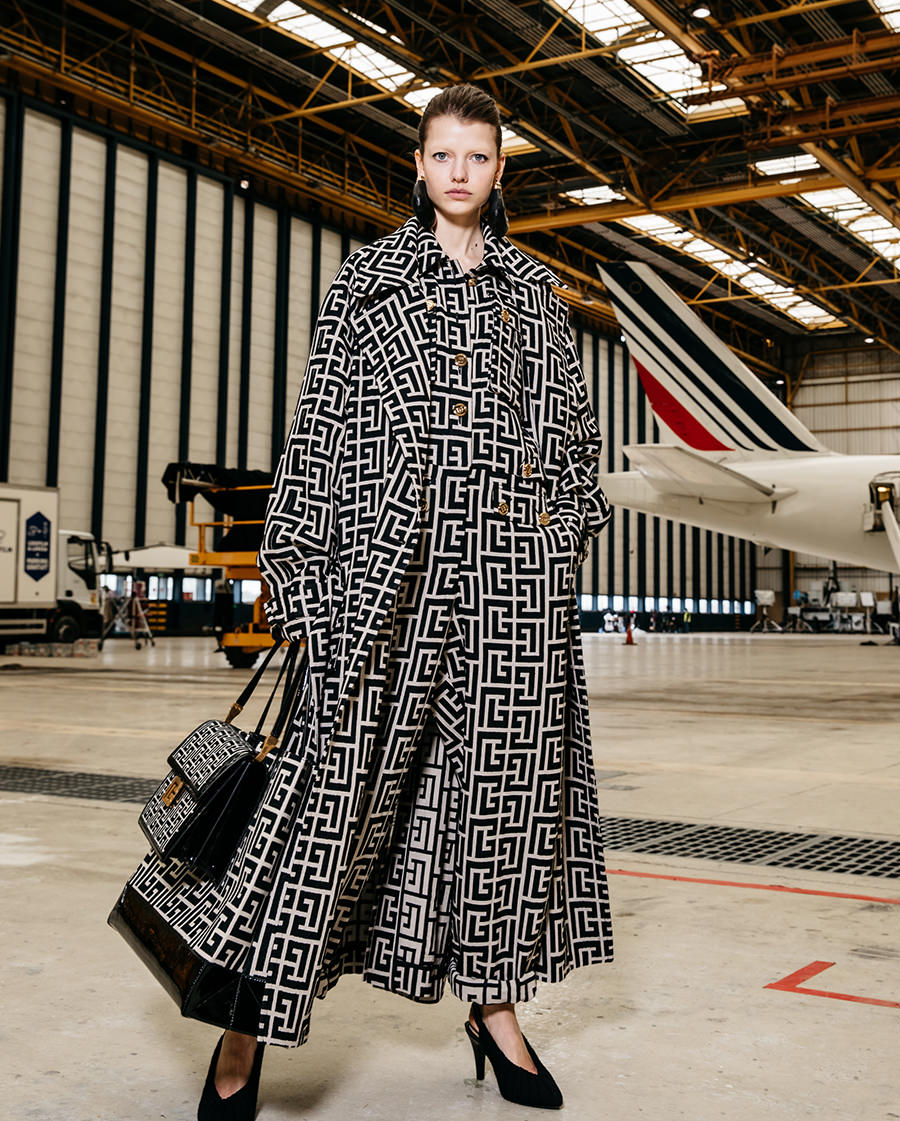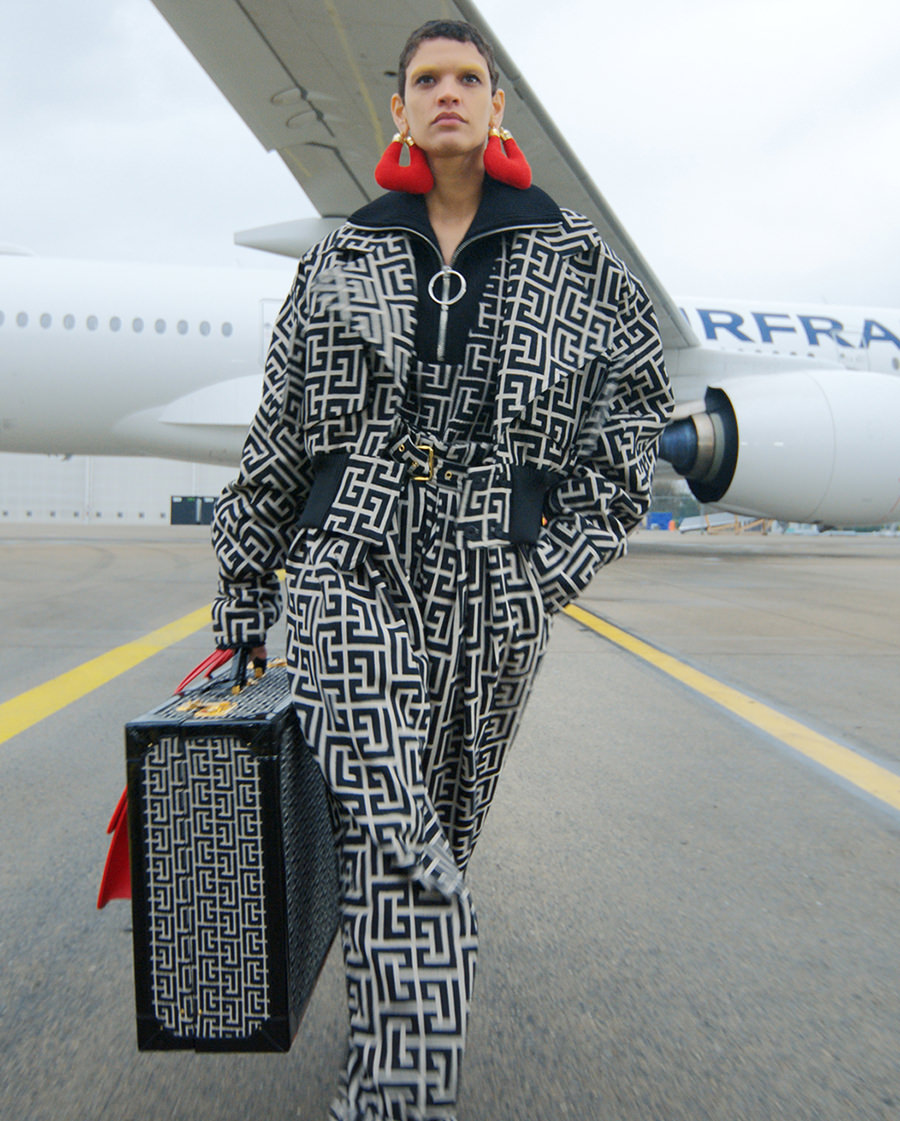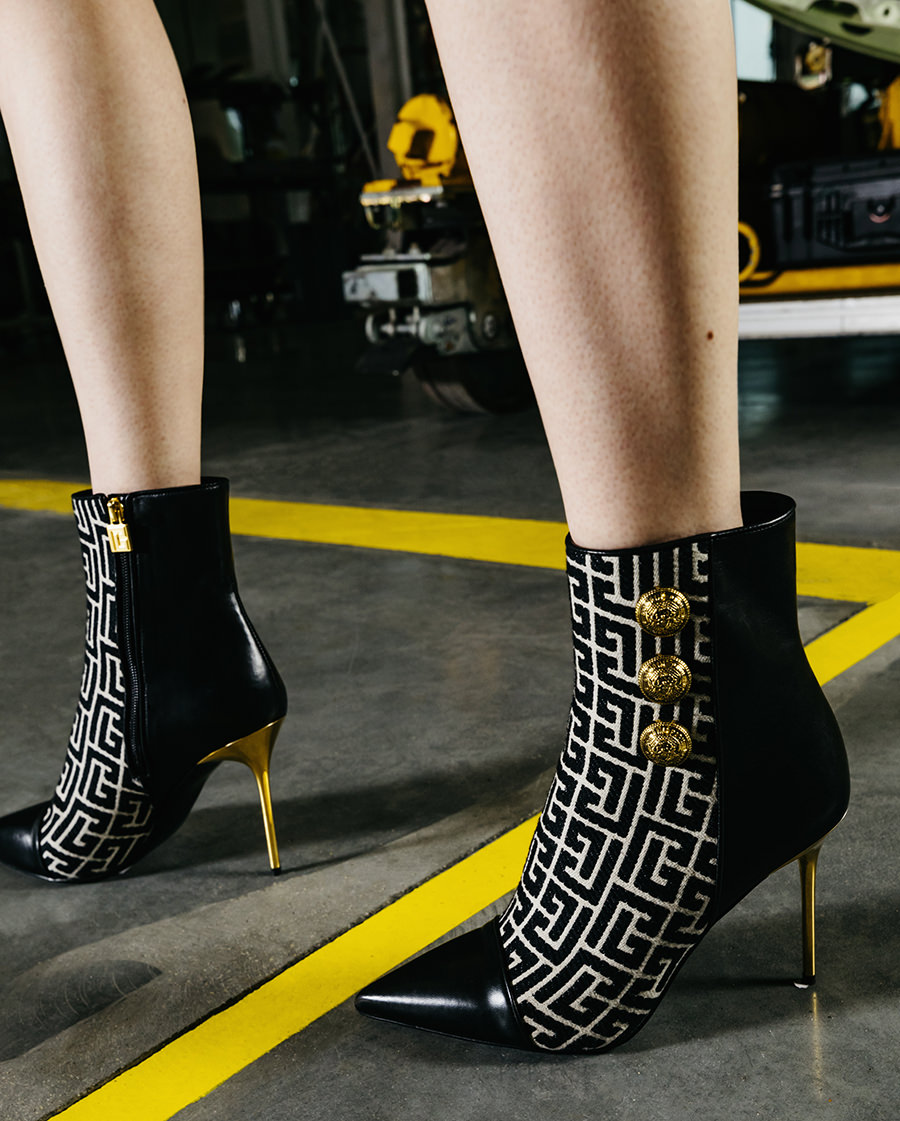THE BALMAIN LABYRINTH
HOUSE CODES
Inspired by the intriguing pathways weaving through the mazes of France's most beautiful Renaissance gardens, Pierre Balmain’s mesmerizing Labyrinth pattern was first introduced over fifty years ago.
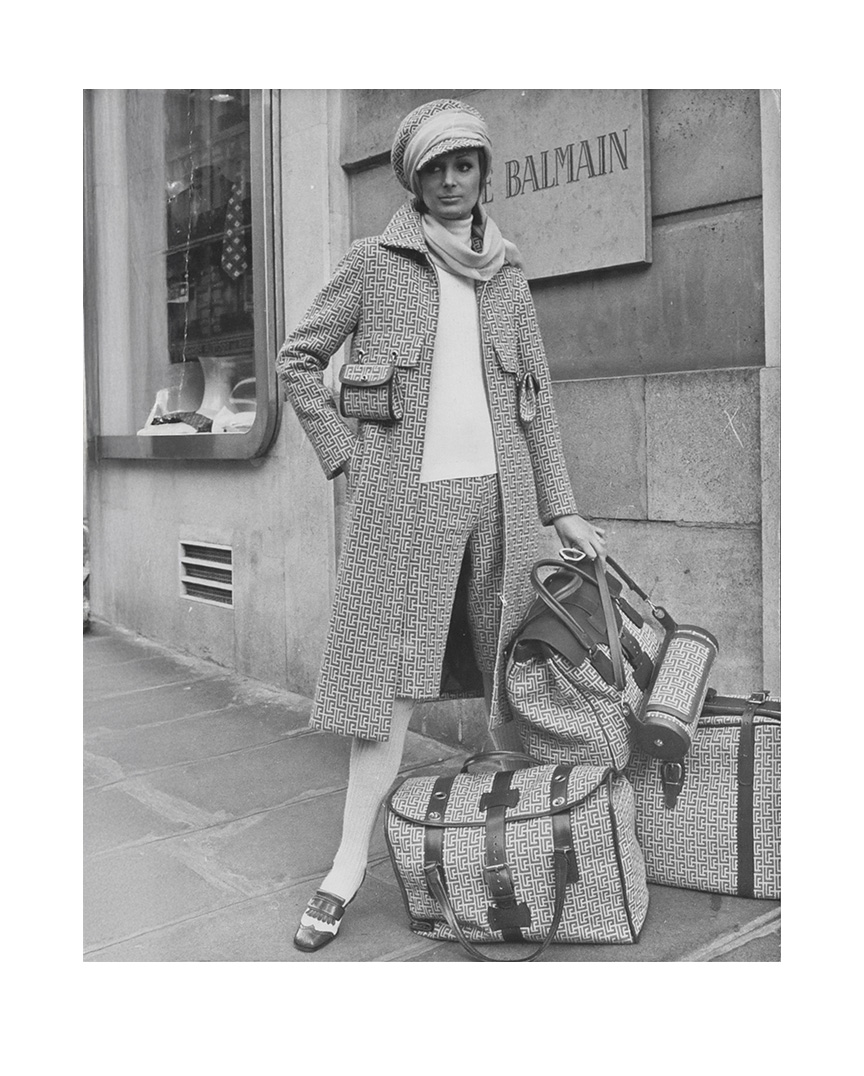
Strikingly modern from its inception, the Balmain "Labyrinth" monogram—formed by multiplying the interlocking initials P and B—has become a defining emblem of the house’s bold, architectural identity. In the mid-1960s, Pierre Balmain first began exploring the possibilities of using the initials “PB” to form a signature for his eponymous house The repeating PB pattern entered the house’s visual language in 1970. It was introduced to Americans that year—on the brown-and-cream carpet pattern of the Balmain boutique that opened on New York’s Madison Avenue, a few months before being duplicated at Balmain’s historic Parisian address.
FIRST DESIGNS
The house relied on the chameleon-like motif to cover a host of its most popular men’s, women’s and accessories offerings in the early seventies. Of course, the Labyrinth’s repeating “B” references the house and its founder, while the interlocking “P” evokes both Pierre and Paris, the city that has been so closely intertwined with the house’s history and creations.
1 / 4
The PB pattern evolved into a signature Balmain motif in the ‘70s, decorating a wide array of Balmain offerings—from bags and luggage to men’s and women’s ready-to-wear pieces. Most notably, the Summer 1971 Haute Couture collection relied on the maze-like motif for a wide range of designs, from small touches (colorful embroidery on belt buckles) to all-over, beige-and-white jacquard prints—thereby offering dedicated Balmain followers the possibility of an entire monogrammed wardrobe.
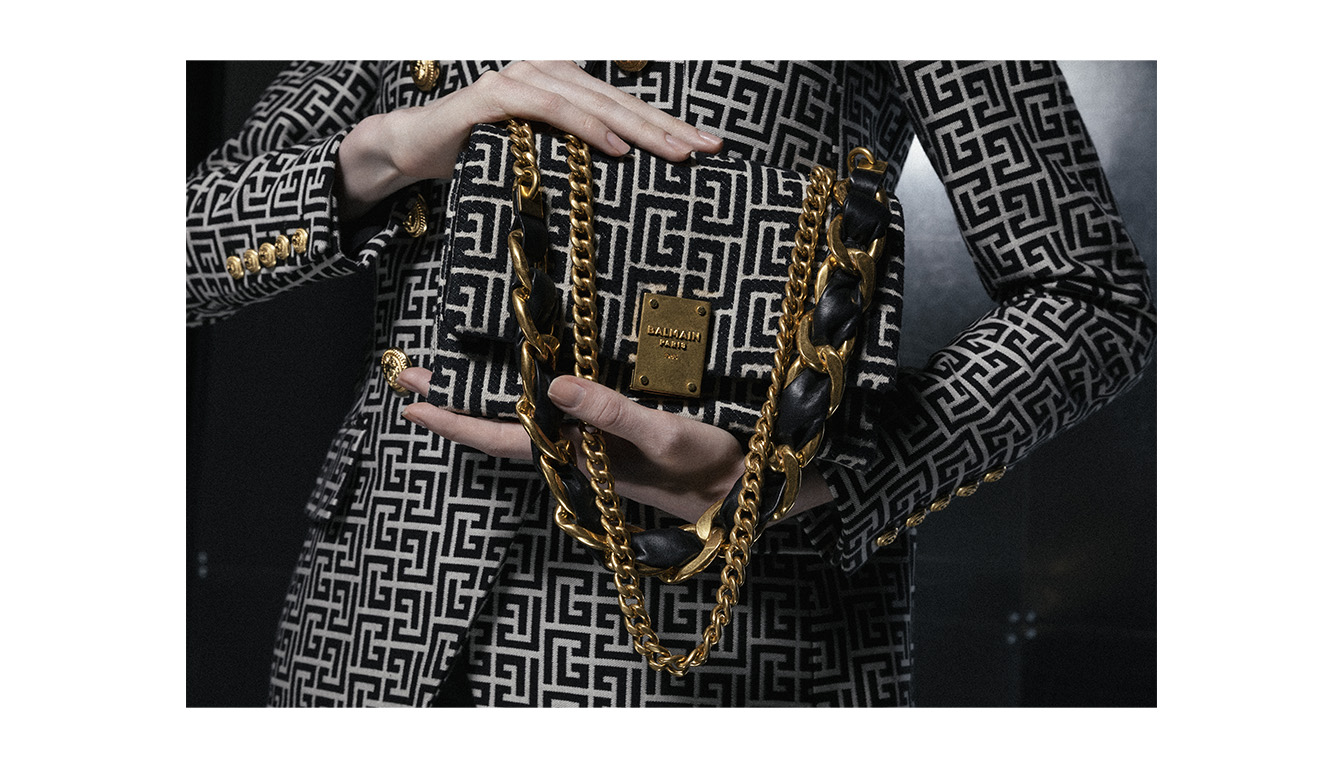
Creative Director, Olivier Rousteing, reinterpreted this key code for his recently introduced 1945 collection, commissioning one of France’s most respected luxury tapissiers to weave a rich and complex two-tone, three-dimensional PB-patterned jacquard that is directly inspired by Pierre Balmain’s mid-century designs. These pieces underscore that Balmain’s unique 80-year heritage remains fundamental to Rousteing’s modern vision.

REVAMPED
Olivier Rousteing revamped and reintroduced this distinctive pattern in 2020, aligning it with his own love for strong graphic designs, while making clear once again the rich inspiration the house’s extensive archives holds for Rousteing and his design teams.
1 / 3

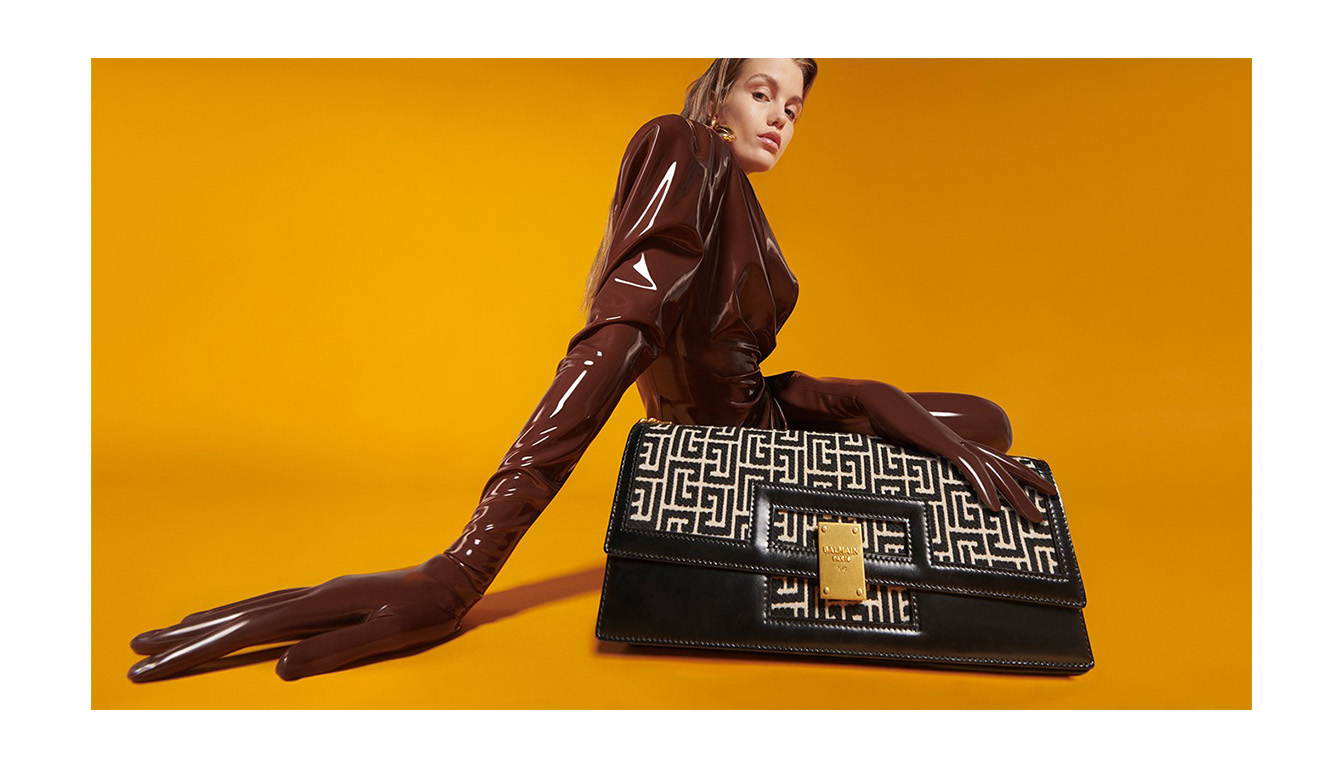
1 / 6
AN ESSENTIAL SYMBOL
The Labyrinth can be spotted, in countless sizes, colors and variations, inside every house collection and during every fashion-week season. The hypnotic motif forms an essential element of Balmain’s distinctive iconography.

A MODERN BAROQUE SPIRIT
HOUSE CODES

